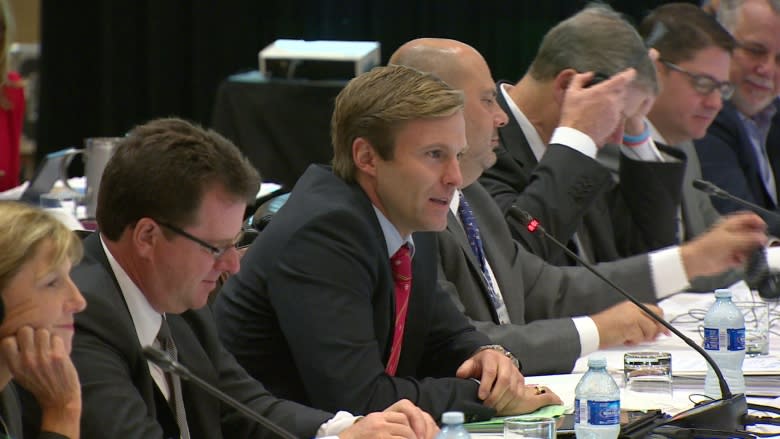New greenhouse gas targets set by eastern premiers, governors
Eastern premiers and New England governors have set a target of decreasing carbon pollution by between 35 and 45 per cent below 1990 levels by 2030.
The resolution was adopted unanimously during the 39th annual conference of New England Governors and Eastern Canadian Premiers in St. John's on Monday.
The new target is meant to orient the provinces and states in their long-term goal, to reach 75-85 per cent of 2001 emission levels by 2050.
The resolution states "that for the region to successfully continue reducing its [greenhouse gas] emissions, [the governors and premiers] must identify and implement additional strategies, policies and measures at the regional level" in order to make the target.
A climate change steering committee will present a plan on how to move forward on the 2030 target at next year's conference.
The resolution comes the same day as a new report by the Atlantic Provinces Economic Council shows greenhouse gas emissions in Atlantic Canada have dropped by 26 per cent since peak levels in 2004, compared to a national decrease of 4 per cent, due largely to the region's slowing economic growth.
"It is a good news story for the environment, but not necessarily the best story for the economy," APEC's senior policy analyst Fred Bergman said in a statement.
"Energy conservation, government policy and industry moves toward sustainable and environmentally-friendly initiatives have been making a difference, but a portion of the decline is also attributable to plant closures and a weak economy."
Atlantic Canada's emissions intensity, which measures emissions per dollar of GDP, fell by 33 per cent between 2004 and 2013, compared to the 19 per cent decline nationally, APEC found.
The electricity sector is a key driver of emissions in the region, the report states.
In New Brunswick, the closure of energy-intensive pulp and paper mills has reduced electricity demand, leading to a reduction in the use of fossil fuels for electricity generation, APEC found.
Emissions from electricity generation in the province fell by 54 per cent during the period in question.
New Brunswick lagging behind
But New Brunswick is set to miss its 2020 reduction commitments by a wide margin, while the other Atlantic provinces have already met them, or on track to do so, according to the report.
During the 2001 conference of eastern premiers and New England governors, a climate change action plan set a goal of reducing regional green house gas emissions by at least 10 per cent below 1990 levels by 2020.
"New Brunswick's 2014 climate change action plan identifies a need for additional actions to achieve the 2020 target," which would be 14.5 megatonnes of greenhouse gases, the APEC report states.
Meanwhile, Newfoundland and Labrador has already surpassed the goal, Prince Edward Island met the target in 2013 and Nova Scotia "is on track."
New Brunswick and Nova Scotia both remain heavily reliant on fossil fuels for electricity, APEC found.
In 2013, Nova Scotia generated 84 per cent of its electricity from carbon-intensive energy sources, while the figure in New Brunswick was 37 per cent.
Newfoundland and Labrador uses hydroelectricity to generate 97 per cent of its electricity, while Prince Edward Island uses wind power, but still relies on imports from New Brunswick for about 75 per cent of its electricity needs.
The premiers and governors also discussed Monday the potential for exporting renewable energy from Canada to New England to help those states curb greenhouse gas emissions and meet their renewable energy goals.
Representatives from the four Atlantic provinces as well as Quebec attended the conference in St. John's, along with representatives from the six New England states.
Many of the premiers and governors are also expected to attend the United Nations conference on climate change on Nov. 30 in Paris.



